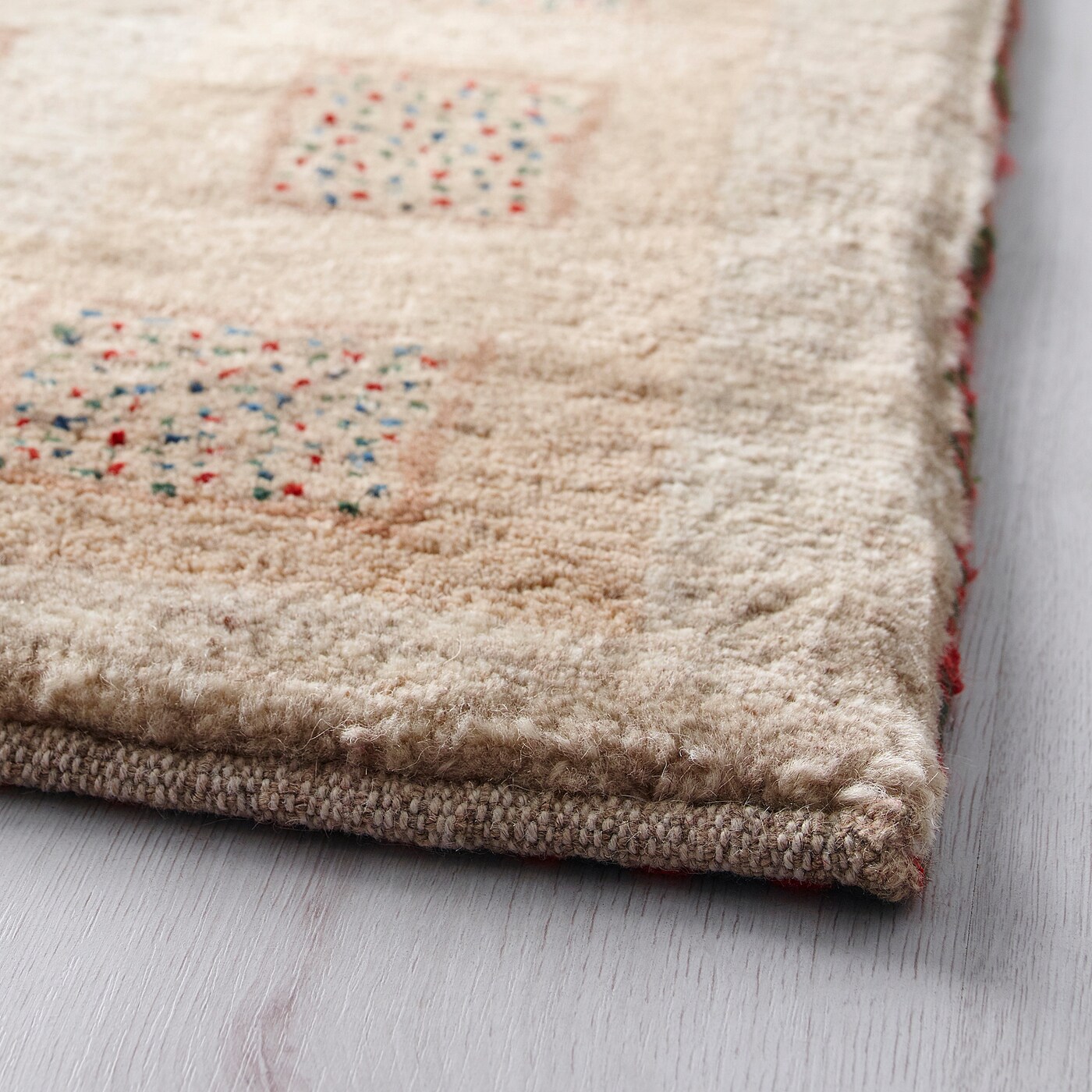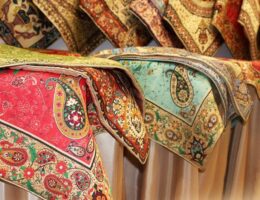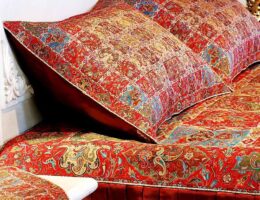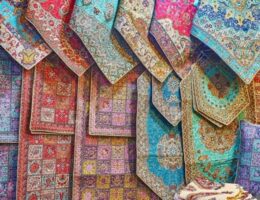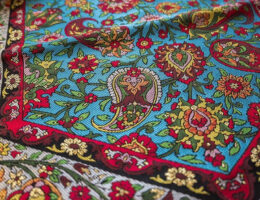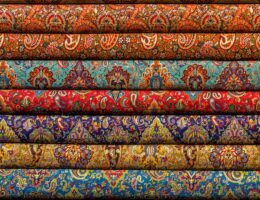IRAN ART EXHIBITION: PERSIAN GABBEH RUGS TALK TO YOU WITH ITS PATTERN!
Is this an incredible new designer we have yet to hear about? No, not exactly but good guess.
A Gabbeh is a handmade Persian rug, traditionally woven by Qashqai or Luri weavers in Iran. These rugs are and were simple, whimsical, or modern in design, often using geometric and stylized human, animal and plant forms.
The word Gabbeh translates closely to unfinished or unclipped. Originally these rugs were woven for the weaver’s own use with the pile left much longer than normal rugs. They were sometimes used as sleeping rugs. A small number of older Gabbehs were woven with undyed wool; the colors being ivory, beige, and browns.
Most of the recent Gabbehs are filled with color with the weaver’s creativity being given free rein. There is nothing subtle or understated about them. The beauty of these rugs is their unmistakable uniqueness. Some Gabbehs will have small animal figures whimsically placed throughout the field. You may see a simple rendition of the Tree of Life design, camels crossing the desert, a stylized sunset, or the colors of the ocean with each rug having its own individual qualities. A few of the more daring pieces have no design at all with only wool quality and variegation of color dictating the design elements.
One of the most important factors influencing the beauty of any rug are the colors. Some of the most magnificent color creations have been and are being achieved on a regular basis in the contemporary production of Persian Gabbehs. Jewel tones abound and old school dyeing techniques have been given new life.
With their simple design elements, they are perfectly suited for modern interiors. Additionally, they can be easily incorporated into most eclectic decorating schemes and work well with traditional Persian tribal rugs, if the colors are in agreement. This is not a rug recommended for a formal room. If the moods and colors are in harmony and it pleases you, that is the bottom line.
An Indo-Gabbeh is a copy of the Persian Gabbeh woven in India. These rugs are much stiffer in body and usually have little, if any color variation, which comes from the hand-spun wool and vegetable dyes used in the Persian Gabbehs.
IRAN ART EXHIBITION: Gabbeh rugs are woven in villages of settled tribal groups, many of them descendants of Turkic-speaking peoples. The most prolific producers of Gabbeh are the Qashqai, famous for their love of color. The best Gabbehs, woven with lustrous hand-spun Persian wool come from the areas near the Zagros Mountains in Southern Iran. The creation of these rugs is most often done in the home, each one a unique and splendid presentation of the weavers’ art.
Gabbeh rugs in the past were never given their due by the old-school rug merchants. The dealers of yesteryear often disregarded these beautiful, simple rugs as crude and unrefined. It was only recently (within the last ten to fifteen years) that any interest was expressed for these rugs at all. Now they are much more widely recognized for their beauty and charm with a renaissance of new products which became available when the embargo on Persian rugs was lifted at the beginning of the last decade.

IRAN ART EXHIBITION: Many rug producers in various countries are currently making new vegetable dyed rugs in Gabbeh designs, such as Afghanistan, India, Pakistan and possibly others. Some of these pieces are lovely but never exactly the same as a Persian Gabbeh. The two factors that I have observed are the quality and characteristics of Persian wool and the heart of the weaver’s vision, creation, design, and color selections. Sometimes whimsical, sometimes minimalist, sometimes fun but always interesting!
In summary, the best Persian Gabbehs have excellent quality wool, harmonious colors, and an appealing design or drawing. Taste, of course, is personal but when a rug is exceptional and beautiful, the majority of people, get it. It’s called woven art! When viewing such a piece or gently running your hand over the wool, the experience is enlivening and inspiring.
